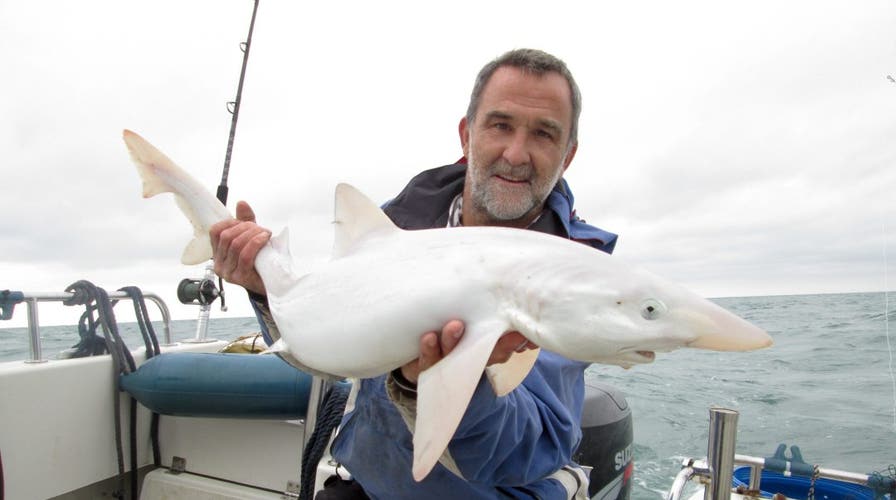Talk about a shark with huge pearly whites.
The first-ever albino shark has been captured off Britain, near the Isle Of Wight, British news agency SWNS reports.
Jason Gillespie was deep-sea fishing in the area when he spotted the remarkable three-foot tope shark.
400M-YEAR-OLD 'ARMORED FISH' MAY CHANGE THE HISTORY OF SHARKS AS WE KNOW IT
"I've been fishing for 30 years and I've never seen one like that," Gillespie, 50, said. "It's the fish of a lifetime, one in a million."
The tope shark, or school shark, has a condition called leucism that results in loss of pigmentation. Leucism occurs when some or all pigment cells fail to develop during differentiation, so part or all of the animal’s body surface lacks cells capable of making pigment.

Jason Gillespie with the first-ever albino all-white SHARK caught off Britain, near the Isle Of Wight. (SWNS)
Gillespie explained that he had heard of all-white sharks before, but had never seen one in person.
"I [had] heard of one person from Wales who caught one years ago but it was much smaller, about 6 lb," Gillespie explained. "I think generally if they lose their color, they struggle to survive because they don't have the same camouflage and they can't hunt as effectively and they get picked up by predators."
MEGALODON DISCOVERY: SCIENTISTS REVEAL GIANT SHARK'S TRUE SCALE
"With tope, they are a protected species, so we unhook them in the water, but the minute we saw this one I shouted to my mate to grab the net and knew I needed to get some photos of it so we pulled her on board and took some pictures," Gillespie added.
After photographing the shark for what he said was "less than a minute," the Waterlooville, Hampshire resident released the shark back into the ocean.
According to MarineBio.org, tope sharks, which were first discovered in 1758, are "harmless to humans" often found near continental shelves. They are widely distributed on the planet, found in areas such as the western and eastern Atlantic, southern Baja California and the Gulf of California in Mexico and more.
Tope sharks can live up to 55 years and are hunted for a variety of reasons, including their meat, liver, oil and fins. They are listed as "critically endangered" by the IUCN Red List of Threatened Species.

